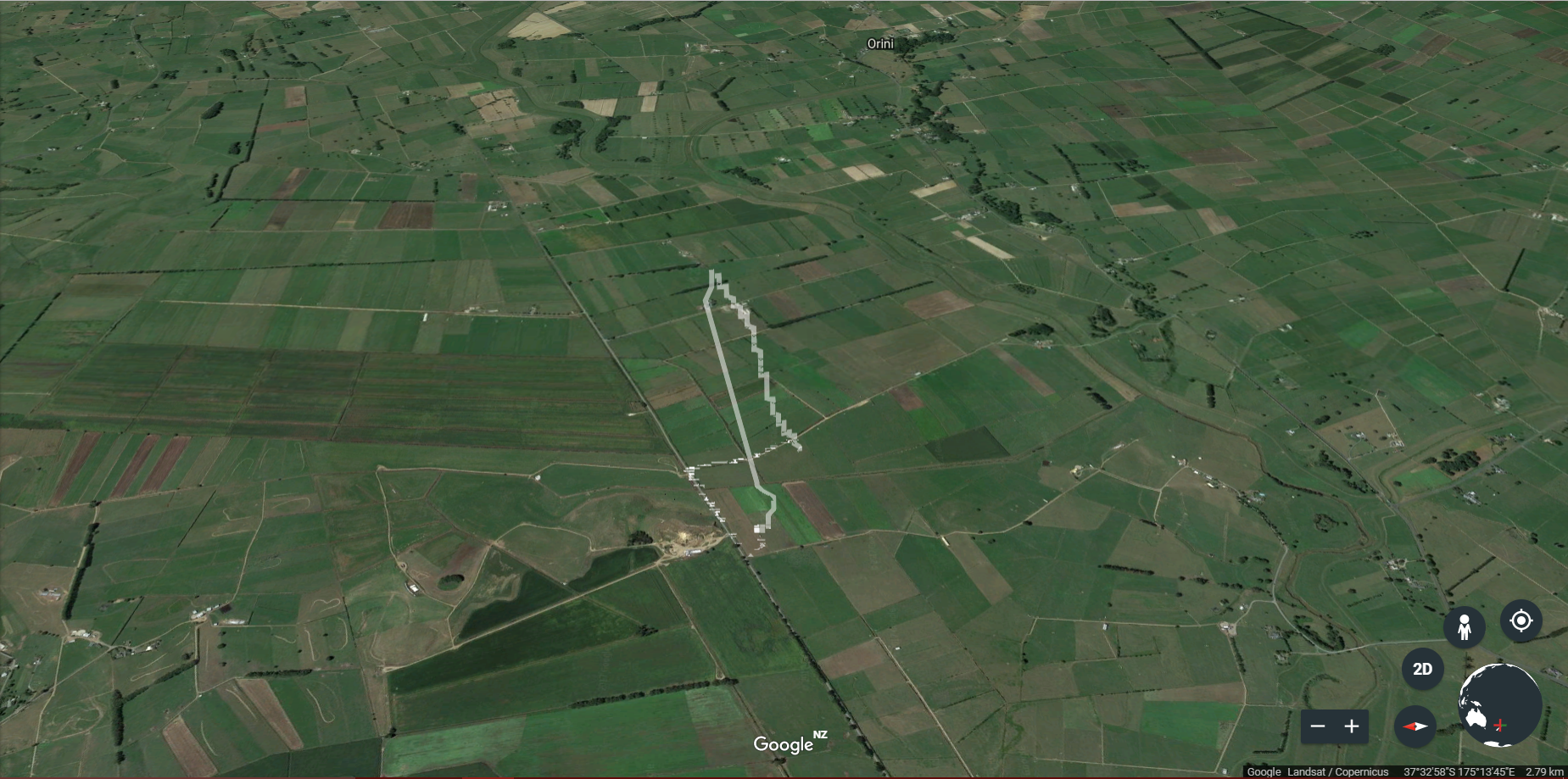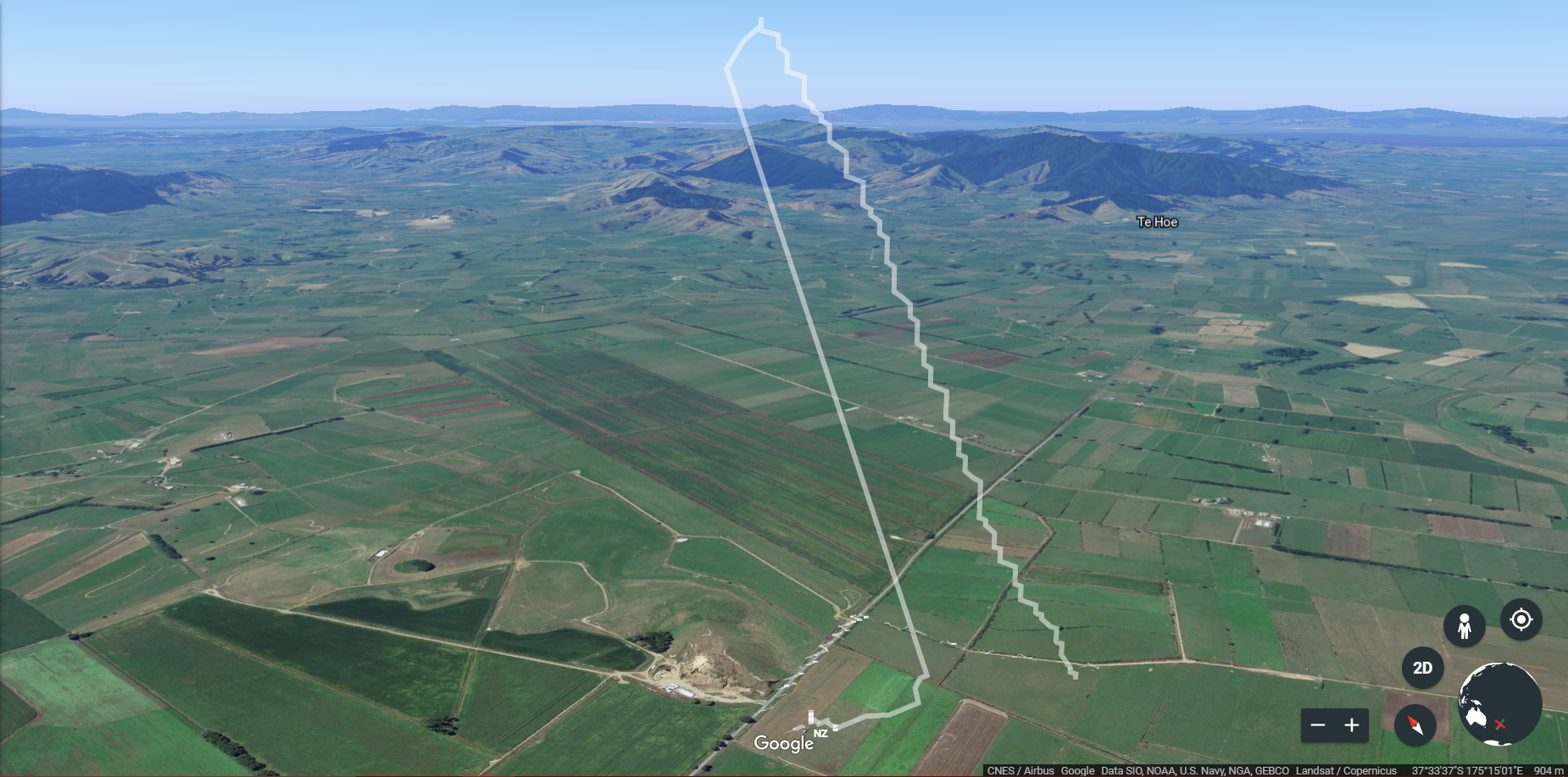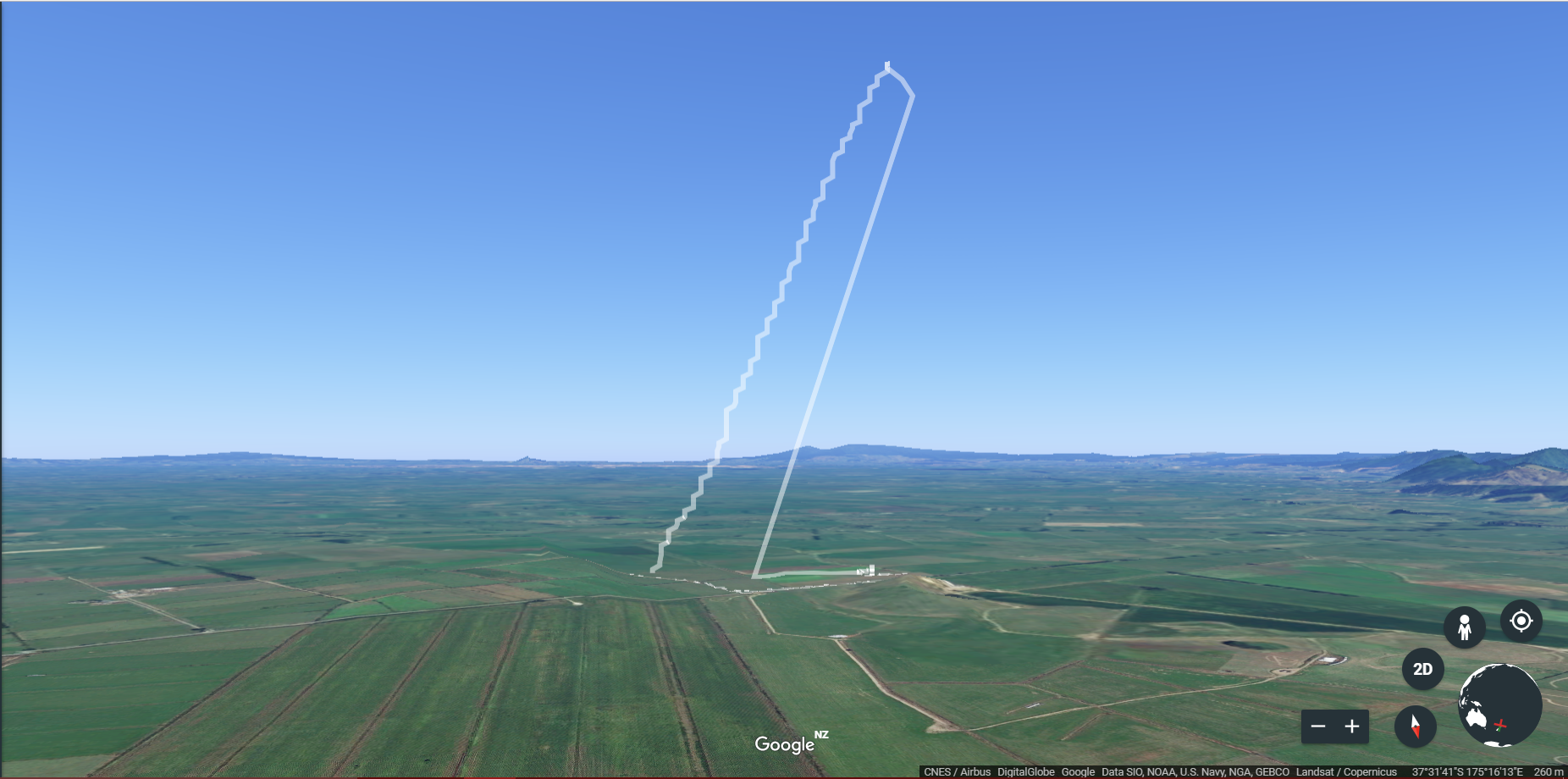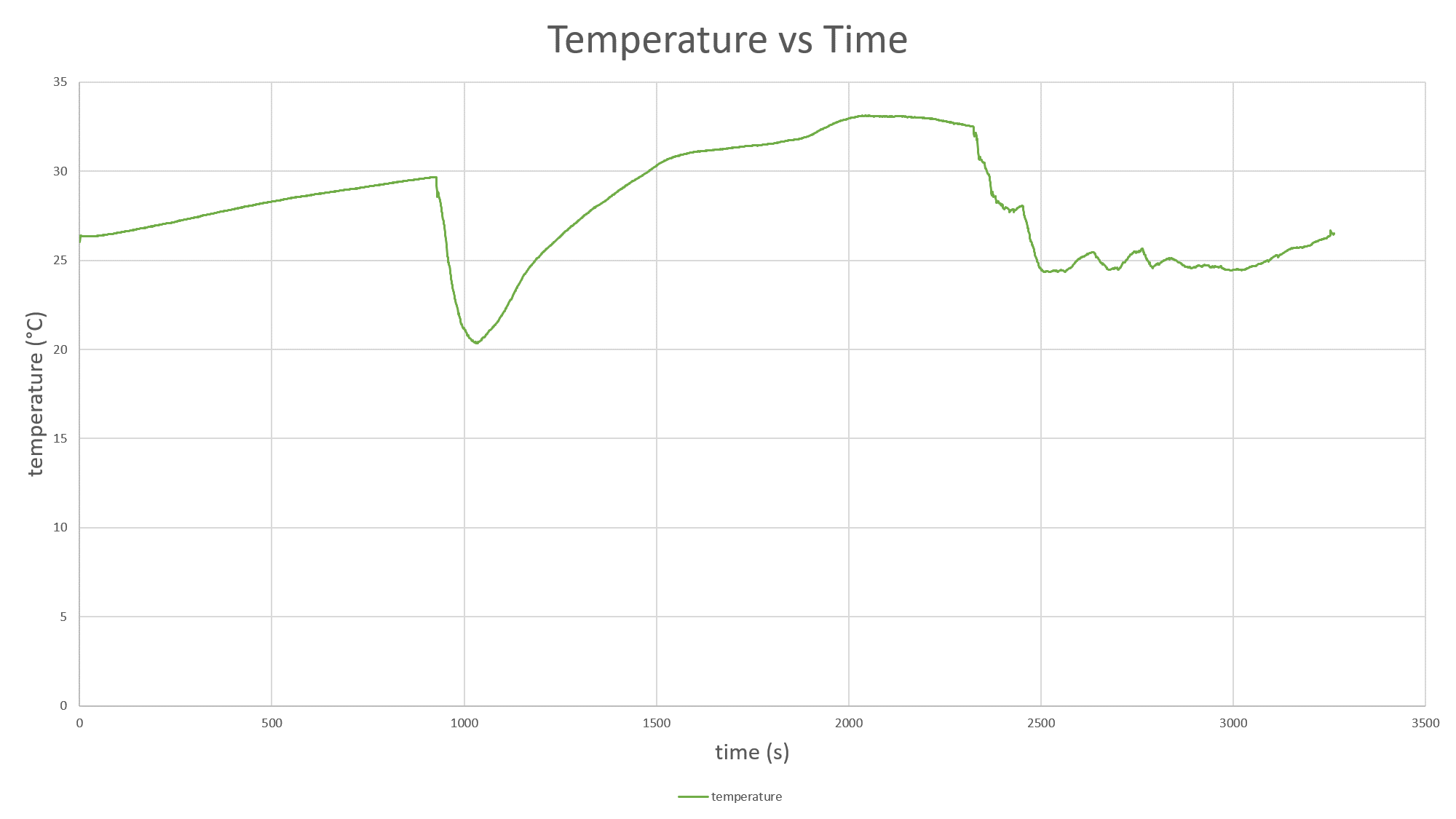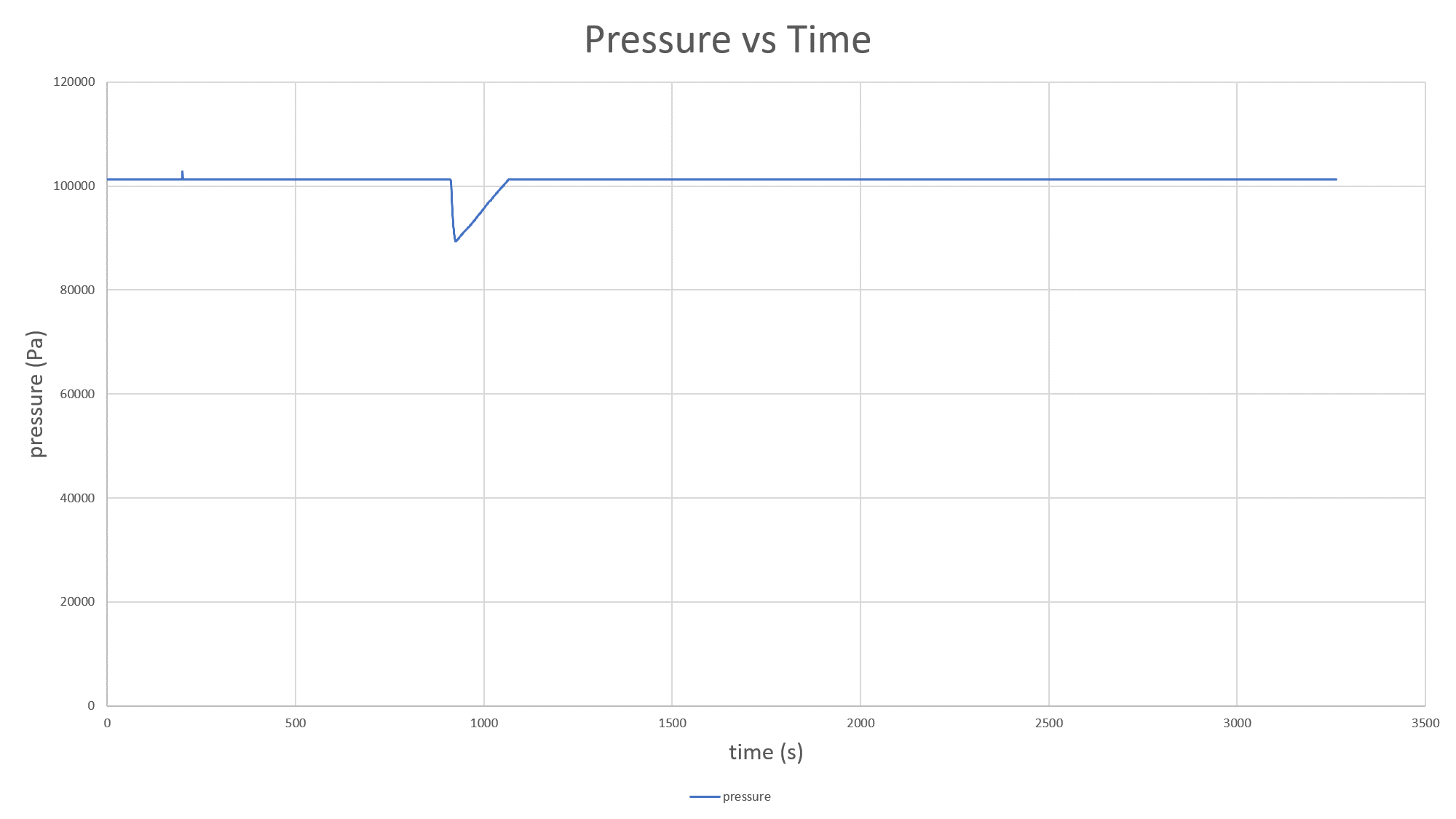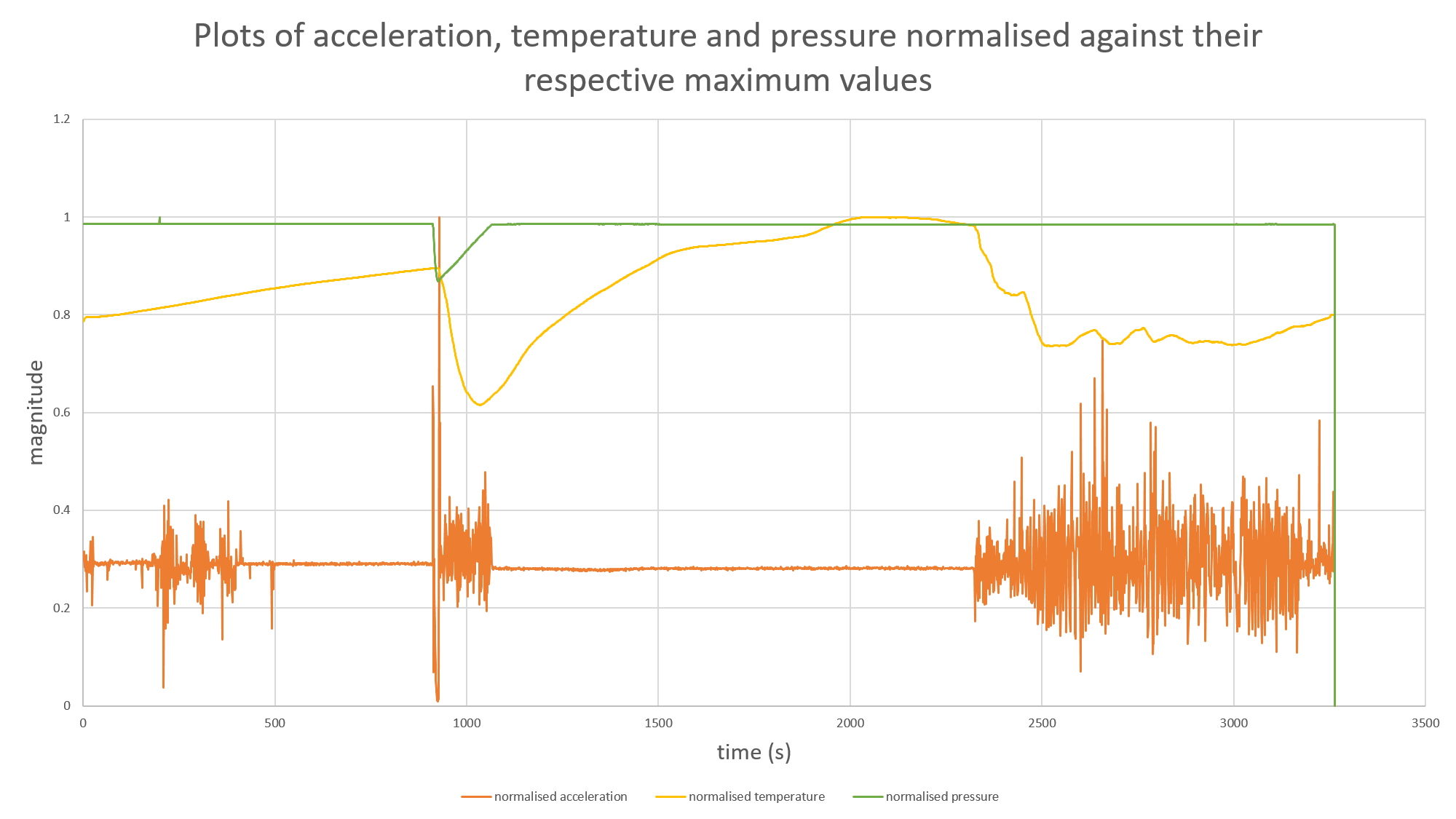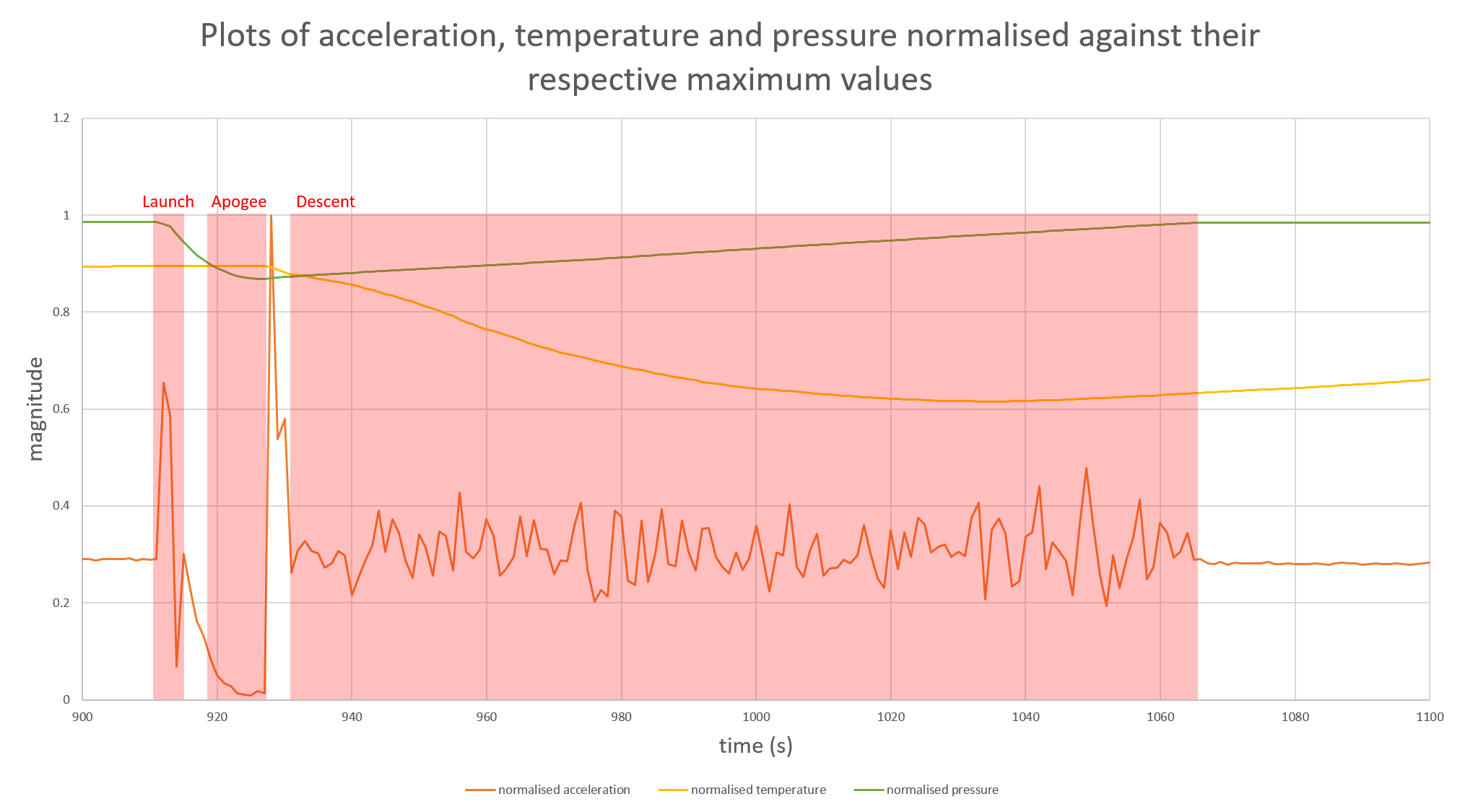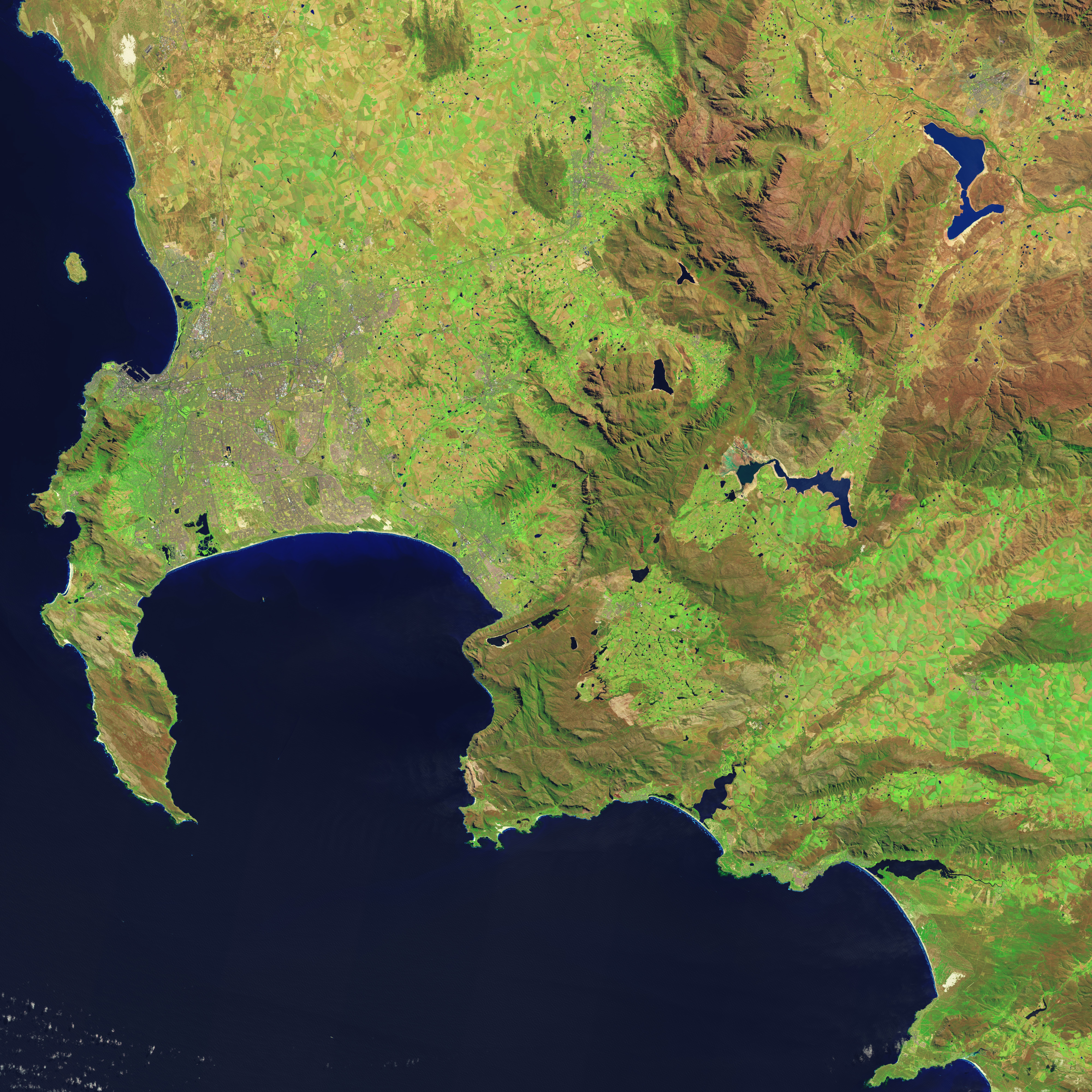With only 46 days to go till Christmas, it is only to be expected that gifts begin falling from the sky – and that is exactly what they did on the 5th of November in the year of 2017, when Team DEW-IT sent a daring expedition into the lower reaches of this planet’s troposphere. Upon the Palpatine’s triumphant return to the surface of the Earth, it was immediately shuttled to DEW-IT Corp.’s science division, where the recorded data was processed and analysed via state-of-the-art techniques. The astounding results, which tell dramatic tales of a strange new world quite unlike our own, are detailed in the following report.
First was the GPS data, which tracked the Palpatine’s position throughout the entire flight. Quite handily, this data can be plotted in Google Earth:
What a flight! If you look closely, you can even see where the Palpatine was carried back along the roads to the launch site, after retrieval. These pictures are of course very pretty, but if you’re interested, I’ve uploaded the .kml file that plots this path here, so you can have a proper look yourself on Google Earth. Explanations for use are at the link.
Additionally, the Palpatine also collected acceleration, pressure and temperature readings, which are shown below:
Remarkable! The most interesting finding was perhaps the pressure, which dropped considerably more than your correspondent expected. Who’d have thought that air pressure drops so dramatically even within just a single kilometre? Anyone who knows anything at all about basic meteorology, I suppose, but as I am not one of those people, I was pleasantly surprised. In fact, pressure showed a strongly linear correlation with altitude, as can be seen in the graph below that plots measured altitude against pressure. Linear regression gives an r2 value of 0.9978, suggesting a very linear relationship between pressure and altitude. This relationship presumably only holds in the lower atmosphere, however, otherwise we’d expect atmospheric pressure to reach 0 at an altitude of about 9000 metres above sea level. Considering that your average airliner happily cruises along at 12000 metres above sea level, I’m going to go ahead and assume that that’s not quite correct. Presumably, then, the rate of pressure drop decreases at higher altitudes. I suppose we’ll have to build another P-Sat and put it into a bigger rocket to find out! Of course, one could probably also just google the air pressure-altitude relationship – but where’s the fun in that? This is a genuine scientific discovery made by Team DEW-IT and the little machine that we built. Ignoring the fact that it’s a discovery made many times before, that’s pretty neat!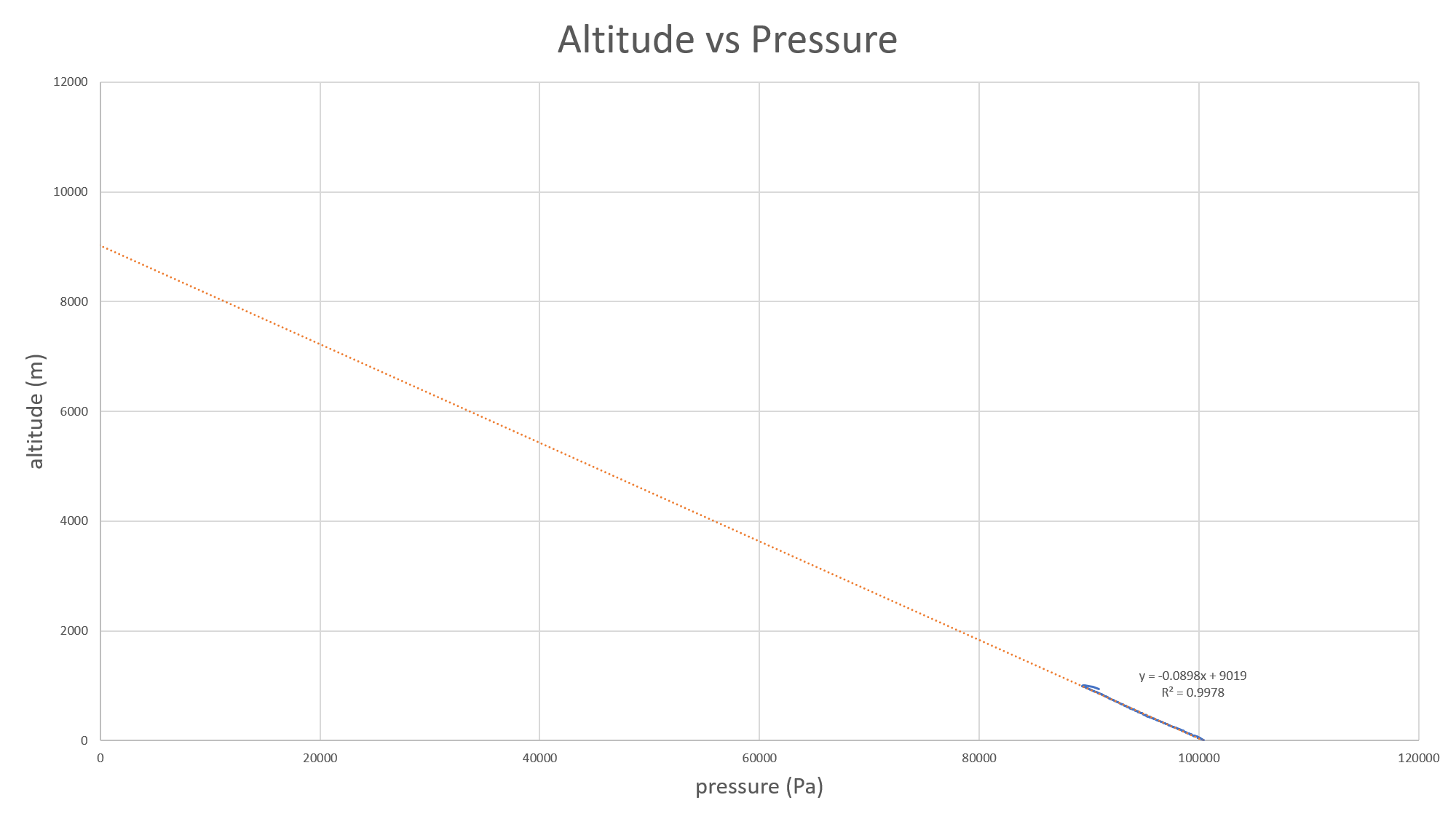
Finally, of course, there was also a camera aboard the Palpatine. A camera designed to activate at specific moments during the descent to photograph the majestic landscape spreading out below the satellite. A camera that, once below a certain altitude, would start recording video to capture those tremendous moments of landing. What amazing things would the Palpatine capture from its celestial vantage point? Have a look at the image below:
This one was taken by NASA. Golly, isn’t it impressive? Very, very pretty. That’s high altitude imagery for you: it really offers quite a unique perspective on the world that we call home; truly, nothing is more humbling and awe-inspiring than to see the ethereal majesty of our great planet rolling peacefully below, and the opportunity to document such a view ought never to be passed up. So it truly is a good thing that the Palpatine was indeed equipped with a camera which was indeed specifically designed to take images of the landscape below. Very good idea, that. High altitude images are quite marvellous. Look, here’s one of Mars!
Very impressive, what? That one’s courtesy of the Mars Reconnaissance Orbiter. Spectacular! Images of another world! Real inspiring stuff. So it surely is quite wonderful that our sub-orbiter, of course, also took some images during its flight. Images, that is, taken by the Palpatine, as it was in the air. Above ground. Here they are:
Ah, hmm, yes, interesting. Well, not to worry; the Palpatine was also designed to start recording video once the GPS detected an altitude within 30 metres of the starting altitude, and stop the recording upon landing. This went exactly as it was meant to: the logs show the recording both begins and stops in response to the appropriate GPS readings. Have a look at the first frame of the video recording below:
In the immortal words of Emperor Palpatine: “It’s treason, then“. Looking at the data now, it appears the GPS unit was reporting a few seconds late:
In fact, there is a 9 second gap between when accelerometer and pressure readings indicate peak altitude occurred, and when GPS data indicated peak altitude. It took the Palpatine 5 seconds to drop the final 30 metres of its descent, and consequently began video recording about 4 seconds after landing. This is of course rather disappointing, and analysis suggests that the delay may possibly be due a last-minute change made in the Palpatine’s code. Whoever was responsible for that? Why, I’m sure I haven’t the faintest idea, but I’m sure there’s no need to throw blame around.
Incidentally, in case you were wondering, that 9 second delay was taken into account during the altitude-pressure measurements made earlier to investigate the change in pressure with altitude.
All in all, though, the Palpatine’s expedition into the lower troposphere was an extraordinary success! What strange and wonderful reports we have received of that distant world; inspiration for future generations of explorers, for sure! And with that, we come to the conclusion of the whole thing. What a grand old time we had! Everything from the initial design phase, through excessive memes and on to the final launch day was one fun step after another.
10/10 would recommend,
Merry Christmas to all, and to all a good night,
Team DEW-IT,
who did indeed dew it.


